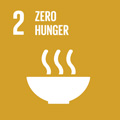- Docente: Luca Fontanesi
- Credits: 3
- SSD: AGR/17
- Language: Italian
- Teaching Mode: In-person learning (entirely or partially)
- Campus: Bologna
- Corso: Second cycle degree programme (LM) in Safety, Quality and Sustainability of Animal Production (cod. 6816)
-
from Mar 05, 2026 to May 12, 2026
Learning outcomes
At the end of the course the student know the basic tools of molecular genetics and their main application for livestock production.
Topics concerning the knowledge of the animal genome and the main technologies for the study of the structural and functional genome of animals in livestock production will be developed. Moreover, the potential and application prospects of genome analysis of animals of zootechnical interest will be highlighted in order to improve the efficiency of selection. The course is part of an integrated course whose final objective is to give the student:
- an in-depth knowledge of the physiology of animal reproduction and the main reproductive biotechnologies applied to farm animals;
- the knowledge of the animal genome in species of zootechnical interest with reference to structural and functional genomics to identify the genes that control the productive and reproductive traits and main applications.
Course contents
This course is part of the Integrated Course “35918 BIOTECNOLOGIE APPLICATE ALLE PRODUZIONI ANIMALI”. Upon completion of the Integrated Course unit, the student will be able to:
- have an in-depth knowledge of the physiology of animal reproduction and of main reproductive biotechnologies applied to farmed animals;
- acquire knowledge on the applications of molecular genetics and genomics in animal breeding and selection.
SPECIFIC PREREQUISITES FOR THIS COURSE
To better understand the topics covered in this course, students are advised to have already acquired knowledge in the following areas: basic statistics, genetics, animal productions, biochemistry, with specific emphasis on DNA, RNA and protein structures.
SPECIFIC CONTENTS OF THIS COURSE
The syllabus is structured as follows:
Lectures
1) Elements of animal breeding and selection, objectives and legal frameworks.
2) Elements of population genetics, quantitative genetics and statistics applied in animal breeding. Concepts of linkage and linkage disequilibrium.
3) DNA, RNA and protein structures, the genetic code, concepts of gene, gene structure and gene regulation.
4) Animal genomes, databases and repositories. DNA sequencing: genome sequencing, assembly and annotation; Various versions of reference genomes, pangenomes.
5) Advanced use of PCR. DNA polymorphisms: SNP,s indels, microsatellites, CNVs and structural variants. SNP Chips.
6) Parentage and inbreeding; use of DNA markers to control and monitoring parentage and inbreeding in livestock populations.
7) Methods to identify major genes and QTLs for production traits in livestock: examples of major genes and QTL in various livestock species.
8) Methods to estimate breeding values in animals. Genomic slection. Use of DNA markers in animal breeding, selection and conservation of animal genetic resources.
9) Gene editing in livestock
Laboratories
10) Applications of molecular genetics in laboratory activities
Readings/Bibliography
Power Point slides presented during the lectures and available on VIRTUALE platform
Genetics and Genomics textbook suggested by the professor:
Pagnacco Giulio (2020) Genetica Animale Applicazioni Zootecniche e Veterinarie - terza edizione. Casa Editrice Ambrosiana / Zanichelli
Brown T.A. (2018) Genomi 4. EDISES.
Book chapters will be indicated during the lectures.
Teaching methods
The course includes both theoretical lectures and laboratory sessions.
Considering the types of activities and teaching methods adopted, attendance for this course requires the successful completion of Modules 1 and 2 via e-learning, and Module 3 on health and safety training in study environments. Information about the schedule and access to Module 3 is available in the dedicated section of the Degree Program website.
Participation in practical and laboratory sessions requires wearing a lab coat and appropriate footwear. Suitable personal protective equipment (PPE), such as disposable latex gloves, will be provided as needed.
Assessment methods
The teaching of Molecular genetics methodologies for the improvement of livestock production is part of the Integrated Course (CI) "Biotechnology applied to animal production" together with the teaching of "Innovative reproductive technologies in farm animals". Therefore, the verification will be carried out only at the end of the lessons of the courses mentioned and consists of an oral test to verify the acquisition of the knowledge required by the course program. The overall evaluation takes into account jointly the level of knowledge achieved in relation to the topics addressed during the lessons of the two modules of the CI.
The assessment method is based on a oral exam of about 20 minutes.
The evaluation will be assigned according to the following criteria:
Sufficient preparation and capacity for analysis, expressed in a language that is barely formally correct, will determine the sufficiency (18-22).
A technically adequate preparation and a sufficient analytical capacity, even if not particularly articulated, expressed in correct terminology, will produce discrete evaluations (23-26).
An in-depth knowledge of the topics addressed in the course, together with a good analytical and critical ability and the proper use of specific terminology will be evaluated with good marks (27-29).
A very thorough knowledge of the topics addressed in the course, together with strong skills of critical analysis, and a full management of the specific terminology will be evaluated with the maximum score (30-30L).
The CI final score consider the evaluation obtained in both modules.
Teaching tools
Power Points slides are available on VIRTUALE (https://virtuale.unibo.it/) platform.
Office hours
See the website of Luca Fontanesi
SDGs



This teaching activity contributes to the achievement of the Sustainable Development Goals of the UN 2030 Agenda.
